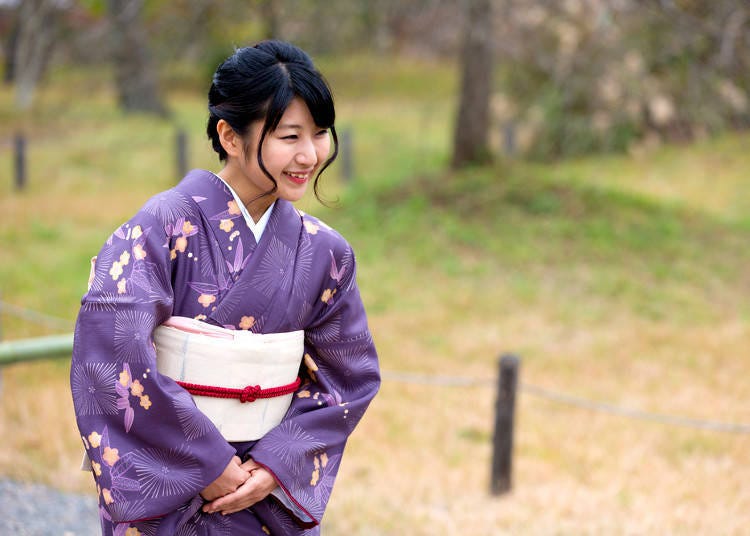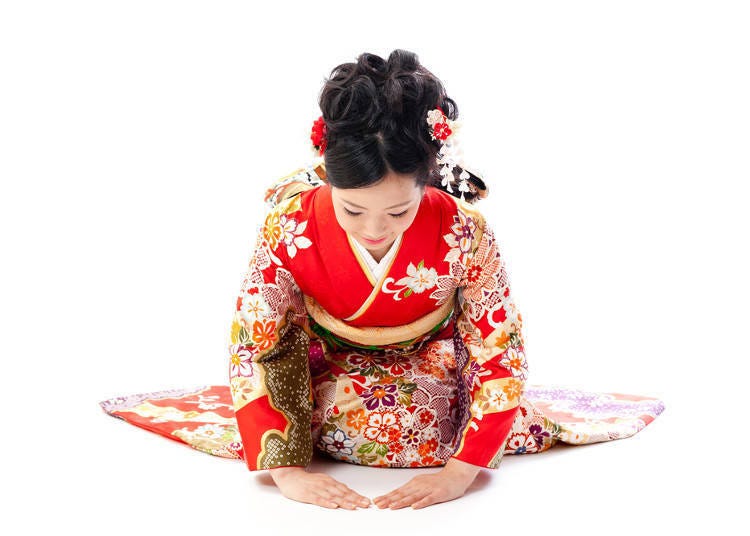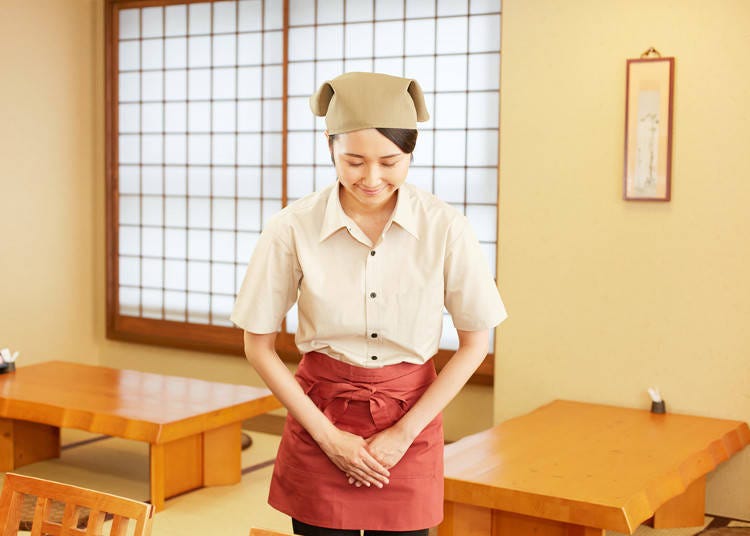
Bowing is a fundamental part of Japanese culture, symbolizing respect and politeness. From everyday interactions to formal occasions, understanding the subtle variations in bowing is an important step in mastering Japanese etiquette.
Why do Japanese bow?

The act of bowing in Japan is thought to have begun around 500 to 800 AD, when Chinese Buddhism was introduced to Japan. Back then bowing was used to portray status, such as when greeting people of higher social status people would lower their heads to show an inferior position to signify that they are not a threat. You can see this in many films and plays set in the past. Just about everyone is expected to bow or kneel to the highest authority like kings and queens.
In modern day Japan, bowing has several different uses. Bowing in Japan is now used to thank, request, congratulate, and apologize to others. It’s become an essential cultural tool that everyone in Japan is taught to execute properly, from children to company workers.
How Japanese bow - and how to bow in Japan

Bowing generally has two stances, sitting and standing. Every bow has three key points – the person’s back should be kept straight and not curved, the person’s legs and hips should remain in the same position when standing, and when bowing one should inhale when bowing and exhale when straightening back up.
Types of bows in Japan
While the essence of a bow generally stays the same, there are all kinds of different kinds of Japanese bows - let’s take a look at them.
1. Eshaku

The most casual bow, used among friends or relative, is simply done by by nodding your head slightly. A more formal Japanese bow also called the “greeting bow,” the eshaku is used between people of equal status, like coworkers or friends of friends. It is usually paired with a greeting like "good morning" (ohayo gozaimasu) or after work (otsukaresama desu). This bow is done at an angle of 15 degrees.
2. Senrei

The “polite bow” called senrei is done while sitting and requires a 30 degree bow. It is used in formal and semi-formal occasions. The entire bow should last between two and three seconds, so do not get up again right away.
3. Keirei
Keirei is the most common type of proper Japanese bow, it is done at a 30 degree angle while standing up. Usually used to thank or greet people, such as customers, it is also used when meeting people for the first time.
4. Saikeirei and Shazai

This is a more rare type of bow, reserved for special people like managers, in-laws, or important customers. A bow at a 45 degree angle, saikeirei is used to display profound respect or sincere apologies, held for around 3 seconds.
Finally, the highest and rarest form of bowing, shazai. In this bow, the person bowing bends forward 70 degrees and holds this position for 4 seconds. This bow is usually only seen when companies have to publicly apologize for their errors after having caused trouble to their customers and others.
Mastering the Art of Bowing in Japan

While there are some other forms of bowing, they are mostly reserved for specific religious events. All of these rules may be a lot to take in at once, but the general rule of thumb is: the more formal an event or higher the authority, the lower and longer the bow should be.
Also a side note: Putting your hands in front of your chest when bowing is a common mistake, it’s not used in modern day Japan except in worship.
Bowing is an intrinsic and fundamental part of Japanese society. It’s ingrained to the point where people even bow while on the phone. Politeness and respect is a quality that Japan has expressed throughout its long history.
- Area
*Prices and options mentioned are subject to change.
*Unless stated otherwise, all prices include tax.
Popular Tours & Activitiess
Recommended places for you
-

LaLaport TOKYO-BAY North Building Now Open: Shop, Dine & Enjoy Events at LaLa arena, Just 2 Stops from Disney
by: Wemmy Chau
-

Enjoy Japan's Gorgeous Winter Lights! Ride the Romancecar to Shonan no Hoseki Illumination
by: Guest Contributor
-

2025 Japan Autumn Color Report: Tokyo's Ginkgo Trees Starting to Glow
by: Timothy Sullivan
-

Black Friday 2025: These Are THE Japan Travel & Shopping Deals to Check Out
-

Don't Miss Out! The One Thing You Must Do Before Shopping at Mitsui Shopping Park LaLaport: Get Your Max 10% OFF Coupon Book
-

Get Ready to Catch 'Em All! First Ever Permanent Outdoor Pokémon Park Opening Near Tokyo!
Inspiration for Accommodations
-

Enjoy Mt. Fuji from the Comfort of Your Room! Recommended Ryokan with Mt. Fuji View
-

Stay Near the Cherry Blossoms! Hotels for Cherry Blossom Viewing in Tokyo
-

Family-Friendly Hotels with Free Shuttle to Disneyland: Convenient Access for a Magical Stay
-

Top Ranked Hakone Hotels with Mt. Fuji View: Enjoy Stunning Scenery from Your Private Space
-

Convenient Tokyo Hotels with Airport Shuttle: Ideal for Families and Heavy Luggage
-

Stunning Tokyo Tower View Hotels: Enjoy Spectacular Scenery from Your Private Space
-

Convenient Asakusa Hotels with Kitchens: Ideal for Extended Family Visits
-

Experience Luxury: Hakone's 10 Best Five-Star Accommodations
-

Enjoy Mt. Fuji Autumn Leaves! Top Hotels Near the Popular Autumn Leaves Corridor
-

Experience Hakone Fall Foliage from Your Room with Stunning Views
-

Playing With Fire: Tasting Tokyo's Super-Spicy 'Arctic Ramen' at Ramen Shop Moko Tanmen Nakamoto
-

From Sweet Potato to Matcha: 5 Must-Try Japanese Ice Cream Flavors in Tokyo's Asakusa
-

Exploring Tokyo: 4 Must-Visit Spots around Tokyo Station
-

10 Important Japanese Phrases to Know Before You Enter a Japanese Convenience Store!
by: Teni Wada
-

Japan's Bath Culture: Tips You Should Know!
-

All You Can Eat Sushi! 7 Surprises Tourists Experienced With Japan's Conveyor Belt Sushi
- #best ramen tokyo
- #what to buy in ameyoko
- #what to bring to japan
- #new years in tokyo
- #best izakaya shinjuku
- #things to do tokyo
- #japanese nail trends
- #what to do in odaiba
- #onsen tattoo friendly tokyo
- #daiso
- #best sushi ginza
- #japanese convenience store snacks
- #best yakiniku shibuya
- #japanese fashion culture
- #best japanese soft drinks


















